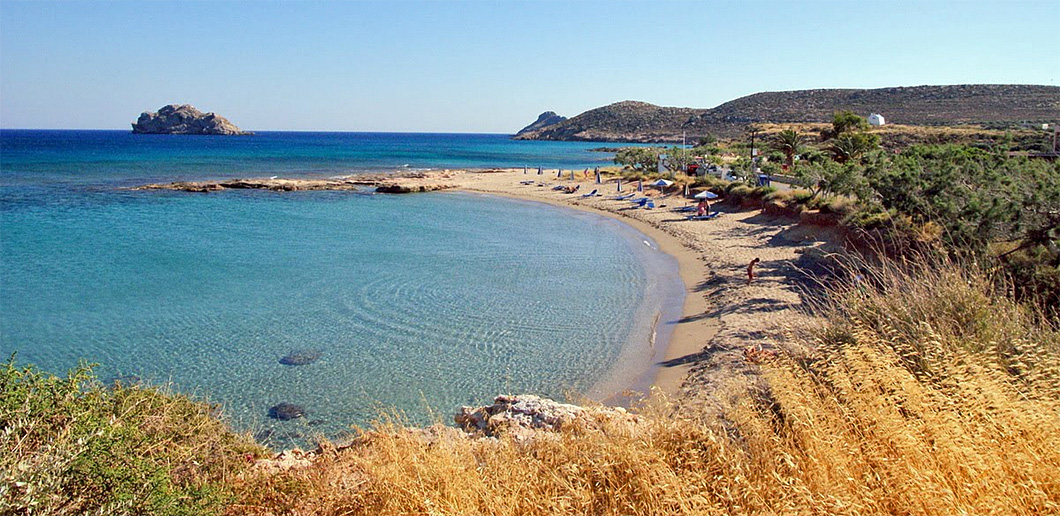Gerontolakos Beach
By Cape Trachilos in a small bay is Gerontolakos beach, or Aghios Nikolaos as it can be called. The last is from a small church – with its blue dome, it sits on a hill behind the beach. The beach has sand, and shallow blue waters.
Here too are rooms to rent and some tavernas. Close by the Aghios Nikolaos church, you will come across the ruins of Ambelos, a city-state of the Hellenistic period.
Argilos Beach
Argilos beach, next to Gerontolakos, is a small bay that has sand and shallow blue-green waters. As its name suggest, the rock surrounding it contains clays. So when you are here, as well as the bathing, do try the therapeutic mud-baths available, courtesy of Nature!
Vourlia Beach
Sandy, it has very clear shallow blue waters.

There is no organization, but once more nearby are rooms to rent and taverns for food and drink.
Xerokampos
Here is a long, sandy beach with shallow, turquoise waters and some small sand-dunes. The beach here is a perfect destination for peace and quiet, also for those desirous of spearfishing in the cave formations that surround the beach.
The village of Xerokampos and its environs provide plentiful tavernas and rooms to rent. Whilst more shops can be found at Zakros.

To get here from Siteia, take the road east to Palaikastro, and then on to Zakros. Outside of Zakros is a road-junction where you turn right on the road for Xerokampos (turn left for Zakros and the Minoan Palace).
Alternatively there is a road from Siteia to Ierapetra: from it turn off to Ziros, and then on to Xerokampos. The second route goes through some abandoned villages and close to the Lamnonios Gorge.
For those who like hiking, a pathway from Aghia Irini takes you to Xerokampos in 2 hours.
Alatsolimni Beach
North of Xerokampos is the Limni tou Alatiou (the Salt Lake): it is a large salt lake near the sea. Up to 1965 salt was extracted from it. On the beach is a complex of coastal saltworks, by which the locals in the Hellenistic era extracted and traded in salt.
Today it is an important eco-habitat, a shelter for migrating birds, such as the flamingo, and other fauna. The beach is sandy, with shallow clear water; in the winter the lake floods and becomes a small sea-lagoon.

Continuing the tour of the Xerokampos beaches, the next one one meets to the north is that of Alona.
Alona Beach
A rather amazing beach, with sand and blue-green crystalline shallow waters, surrounded by rocks. Utterly deserted, not a tree will you find, only some dunes .. and the rare white sea-lily that grows on them and blossoms at the summer’s end.
The loggerhead turtle (Karetta karetta) comes ashore here to lay her eggs, as is the case with many of these local beaches.
Roussospasma Beach
This sits at the end of a small fjord-like cove. Small and pebbly, secluded and isolated, it has blue-green crystalline waters, which the nudists are keen on. It is not organized. To get there, a boat is needed or a steep climb down an earthern eminence.













